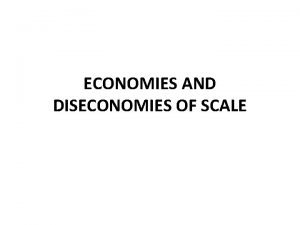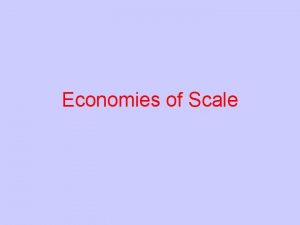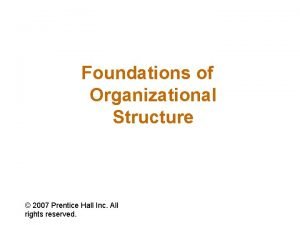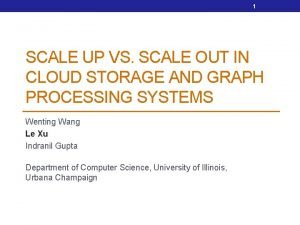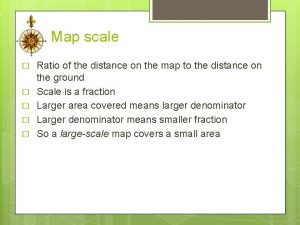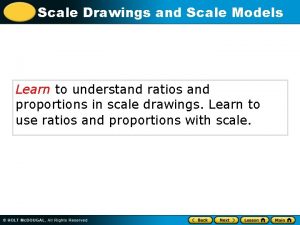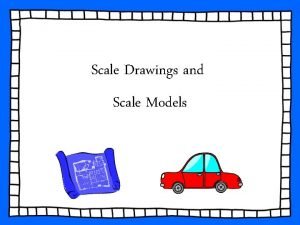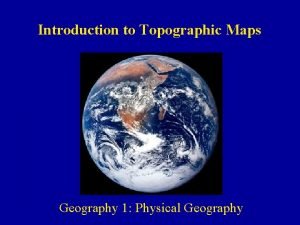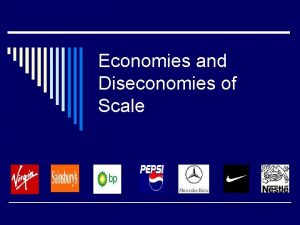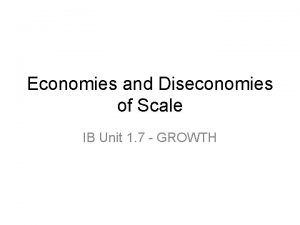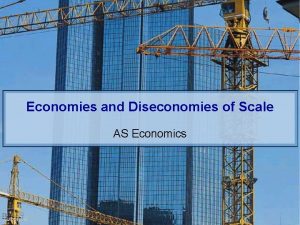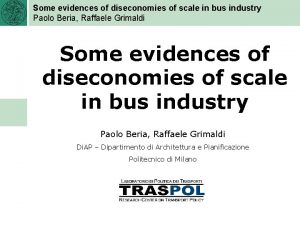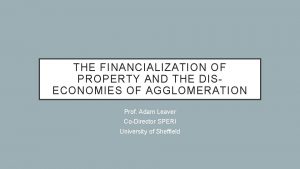PRODUCTION Diseconomies of Scale DISECONOMIES OF SCALE Diseconomies












- Slides: 12

PRODUCTION Diseconomies of Scale

DISECONOMIES OF SCALE Diseconomies refer to all those losses which accrue to the firms in the industry due to the expansion of their output to a certain limit. These are the factors leading to the increase costs due to overexpansion.

DISECONOMIES OF SCALE INTERNAL EXTERNAL Internal diseconomies implies to all those factors which raise the cost of production of a particular firm when its output increases beyond the certain limit. External diseconomies are not suffered by a single firm but by the firms operating in a given industry. These diseconomies arise due to much concentration and localization of industries beyond a certain stage.

DISECONOMIES OF SCALE INTERNAL DISECONOMIES EXTERNAL DISECONOMIES • Inefficient management • Pollution – localization leads to pollution which is unhealthy for labourers • Industrial relations • Marketing – increase advertising cost • Strains on Infrastructure – localization leads to the delay of raw materials. • Poor communication • Shortages • Managerial – cost increases to pay managers • Decline

GROUP TASK Analyze the case study given to you on the sheet, regarding factors to contributed to the diseconomies of scale at Georgeson and Son Ltd.

PRODUCTION METHODS

LABOUR INTENSIVE PRODUCTION VS CAPITAL INTENSIVE PRODUCTION

LABOUR INTENSIVE PRODUCTION Labour intensive refers to the production that requires a higher labour (humans and animals) input to carry out production activities in comparison to the amount of capital required.

CAPITAL INTENSIVE PRODUCTION Capital intensive refers to the production that requires higher capital investment such as financial resources, sophisticated machinery, more automated machines, the latest equipment, etc.

INDUSTRIES LABOUR INTENSIVE INDUSTRIES • Agriculture • Restaurants • Hotel industry • Mining CAPITAL INTENSIVE INDUSTRIES • Oil refining industry, • telecommunications industry, • airline industry • and public transport authorities that maintain the roads, railways, trains, trams, etc

EXAM TYPE QUESTION Discuss the implications of an industry moving from a labour intensive production to capital intensive production. What does it mean to discuss? Essentially this is a written debate where you are using your skill at reasoning, backed up by carefully selected evidence to make a case for and against an argument, or point out the advantages and disadvantages of a given context. Remember to arrive at a conclusion.

 Alur proses produksi produk
Alur proses produksi produk External economies of scale definition
External economies of scale definition Advantages and disadvantages of diseconomies of scale
Advantages and disadvantages of diseconomies of scale Explain economies and diseconomies of work specialization
Explain economies and diseconomies of work specialization Scale up scale out
Scale up scale out What is a line scale
What is a line scale Outer scale and inner scale
Outer scale and inner scale Ratio map scale
Ratio map scale Scale up and scale out in hadoop
Scale up and scale out in hadoop Scale drawings/models & scale factor
Scale drawings/models & scale factor Technical drawing vocabulary
Technical drawing vocabulary Inner scale protractor
Inner scale protractor Physical and cultural features of topographic map
Physical and cultural features of topographic map

